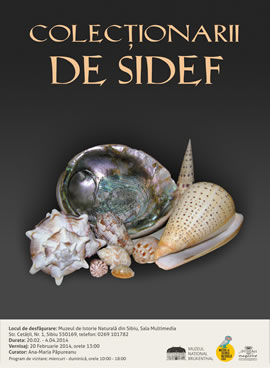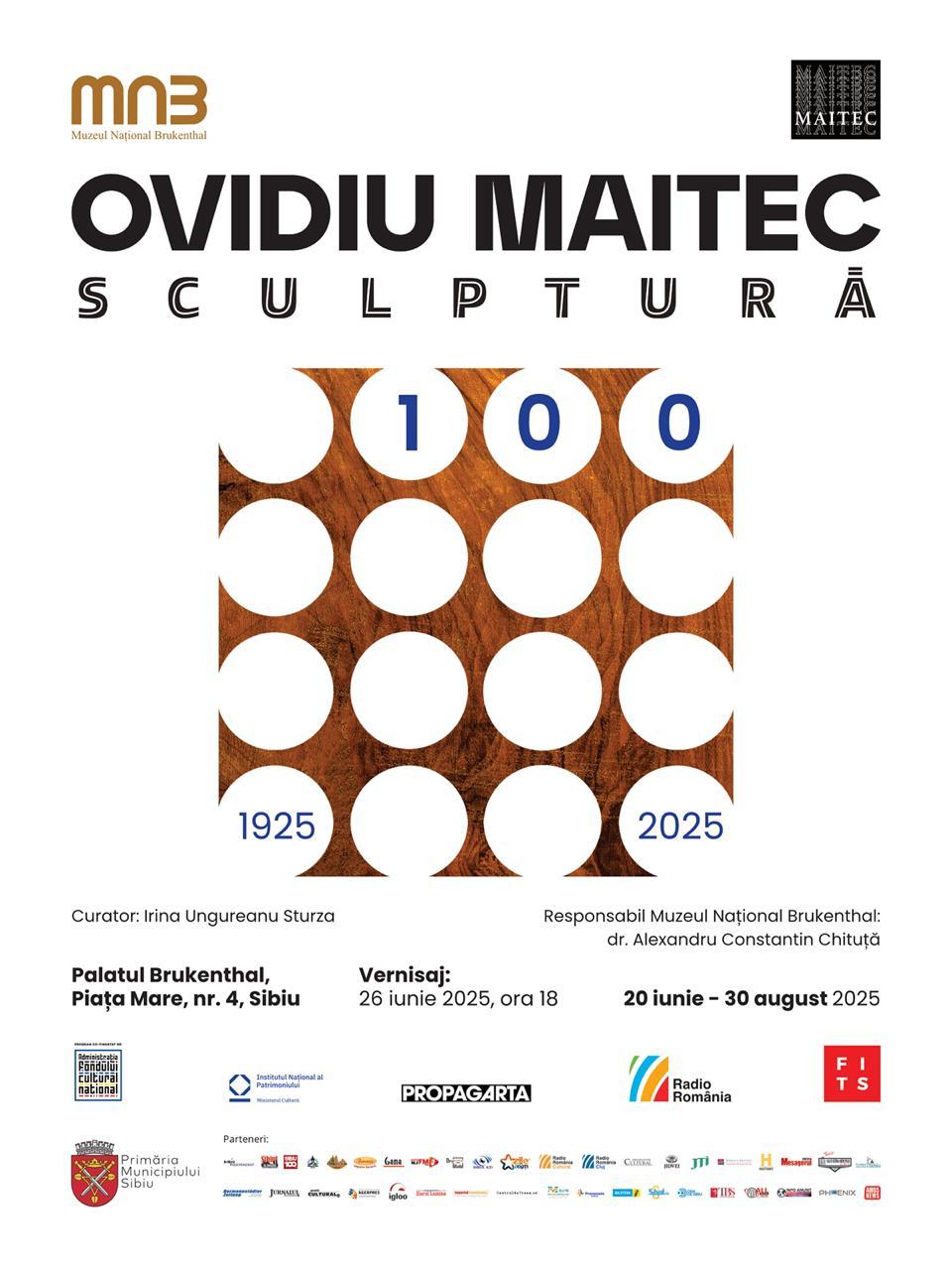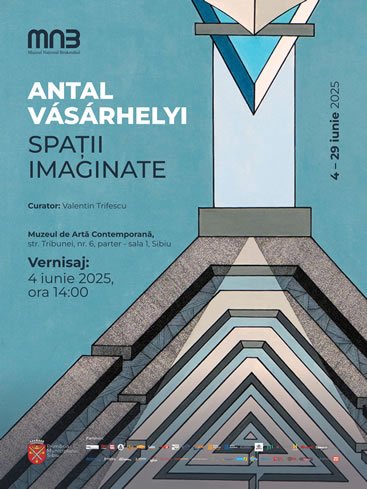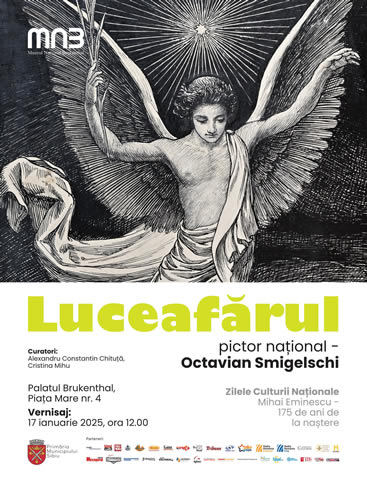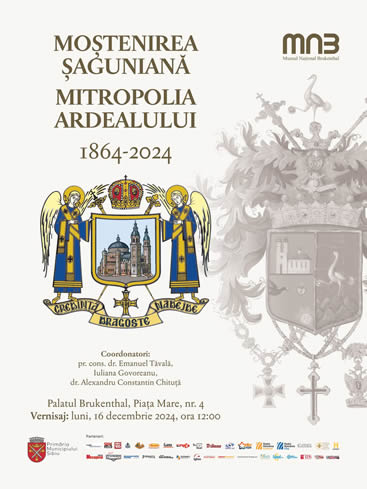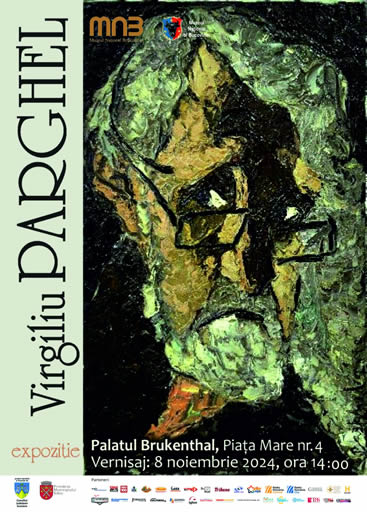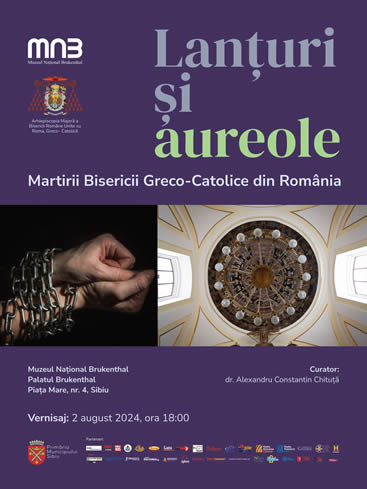Venue: Natural History Museum in Sibiu, Multimedia room
Cetăţii Street, No. 1, Sibiu 550169, telephone: 0269 101782
Period: 20.02. – 4.04.2014
Opening: 20 February, at 12:00
Curator: Ana-Maria Păpureanu
Text from the exhibition curator:
The colors and elegant shapes of snail and mussels shells have captured human attention since ancient times. Shells of marine snails used as beads dating back over 100,000 have been found in North Africa. These ornaments are among the oldest forms of past art and human culture. Shells frequency, abundance, diversity, size and ornamentation turned them into objects of hobby while the activity of collecting and studying these natural objects into a true science called Conchology (Conchologie in German or Conchyliologie in French). The Romanian language has no equivalent for Conchology, today a branch of Malacology (part of Zoology that deals with the study of molluscs i.e. snails, shellfish and cephalopods). In the eighteenth century in Europe, collecting shells was a hobby practiced by the higher social class. In that period, the shell Glory of the Sea Cone (sea snail, Conus gloriamaris Chemnitz, 1777) exceeded the value of a painting, and a shell of the marine snail Epitonium was purchased with today’s equivalent of 300,000 lei. Shells belonging to these snails can be seen in the exhibition.
The temporary exhibition Nacre Collectors brings Conchology to public attention as the science of collecting and studying shells and mussels and pays a tribute to those who through their work and dedication contributed to the development of the Natural History Museum in Sibiu Malacology Collection. The Natural History Museum in Sibiu Malacology Collection is among the oldest collections of this type in Romania. For over 160 years, the collection has grown continuously, now counting 515 220 pieces, the largest collection found in the museum’s heritage.
Pieces exhibited belong to international renowned collectors Michael Bielz (1787 - 1866), Eduard Albert Bielz (1827 - 1898), Moritz von Kimakowicz (1849 - 1921), Richard von Kimakowicz (1875 - 1973) and respectively Carl Friedrich Jickeli (1898 - 1925). Michael and Eduard Albert Bielz, father and son, have formed a collection of over 200,000 specimens of shells. In addition, they described and named for the first time worldwide over 20 species new to science, names still used today by the international scientifical community. The Kimakowicz Malacological collection is the result of over 70 years of passion passed on from father to son. The collection includes 305.431 shells, from which 50 new species described and named by the two collectors. The present exhibition displays to the public for the first time some of these original specimens the so-called holotypes (a single physical example of an organism, known to have been used when the species was formally described) from the Bielz and Kimakowicz Malacological collections.
At only 19, in 1870, C. F. Jickeli, left his hometown Sibiu and undertook a trip to Egypt, Ethiopia and Alexandria. Here he collected molluscs from the Red Sea, studied the malacological fauna of Ethiopia, identifying new species. Specimens collected during his expedition will be on display.
Only big passions, can give birth to great men (C.A. Helvetius 1715-1771), and the passion for mollusc studies of these five collectors from Sibiu turned them into international renowned figures. The Natural History Museum in Sibiu invites you to learn more about them and, maybe, convince you to follow their example and become a Nacre Collector

